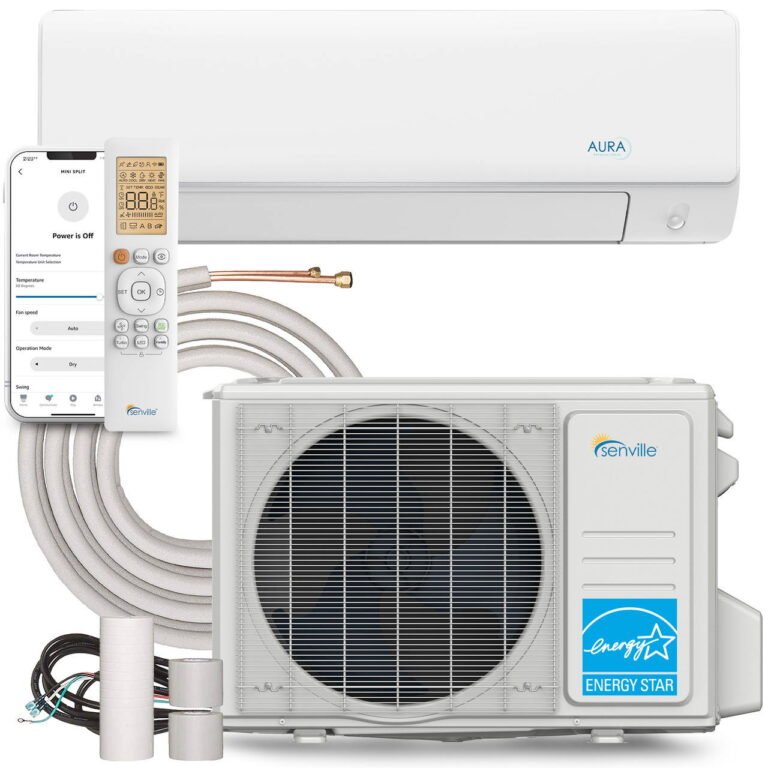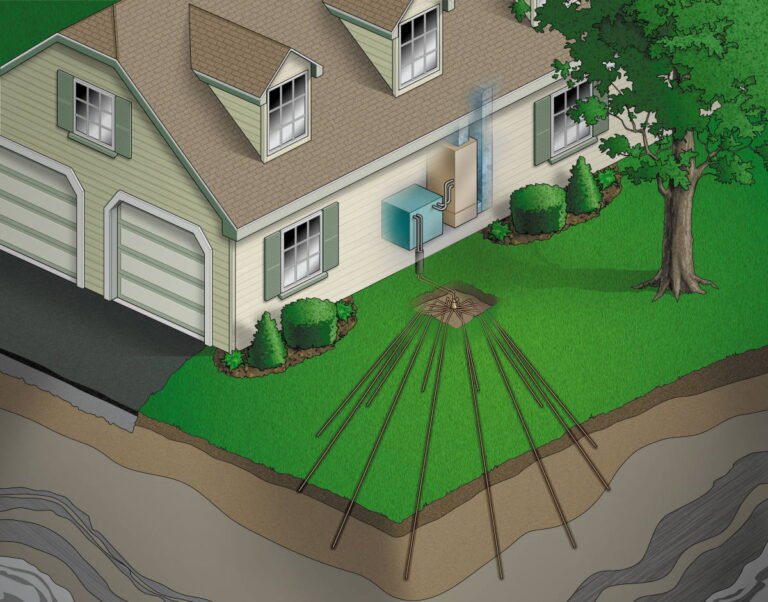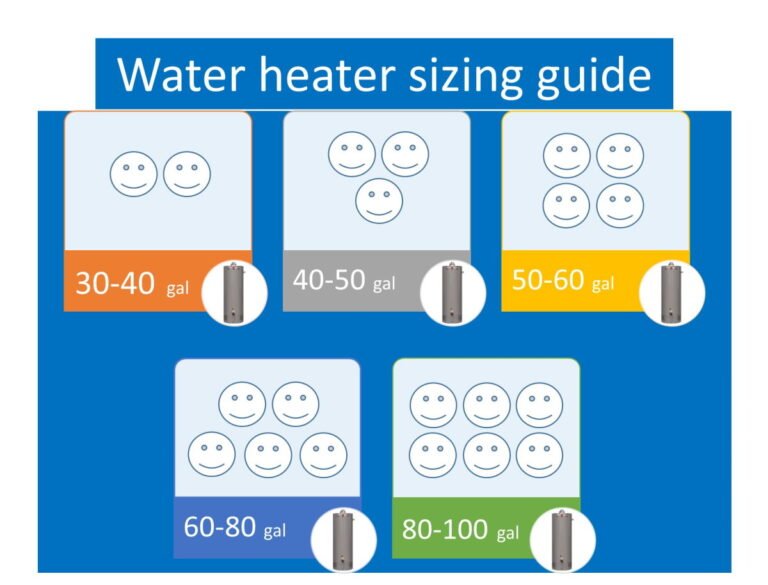How to Heat Your Home Efficiently: Things to Consider
Buying an energy-efficient HVAC system can be hard and time-consuming because there are many factors to consider.
But don’t worry, we will lead you through the available options, showing you how to heat your home efficiently, so you can choose the most suitable and cost-effective type.

Importance of Choosing the Right Heating System
Heating and cooling account for over half of the energy used in home, according to EnergyStar.gov.
With fuel costs on the rise and climate change becoming a more pressing concern, the choice of heating system you make can have a significant impact on your energy bills and comfort.
Homeowners today are increasingly seeking heating solutions that are efficient, eco-friendly, reliable, and cost-effective. Making the right choice has never been more critical, as it can greatly affect both your wallet and the environment. Understanding your options is the first step towards a smarter, more sustainable home.
Energy Efficiency and Ratings
One of the most important factors to consider is energy efficiency. Heating systems are rated by efficiency metrics such as AFUE (Annual Fuel Utilization Efficiency) or HSPF (Heating Seasonal Performance Factor for heat pumps).
The higher the efficiency rating, the lower the operating costs. It’s also recommended to hire a professional to conduct an energy audit of your home.
Components of Home Heating Systems
Home heating systems are designed to heat air and water and are comprised of three units:
- Heat source (furnaces, boilers, solar panels…)
- Heat distribution system (radiators, ducts, etc.)
- Control system (valves, thermostats, etc.)
Types of Home Heating Systems
Here is the list of the most common types of heating systems in North America, based on the distribution system. These systems are designed to move warm air, steam, or hot water, and heat one room or the whole house (central heating system).
Forced Air Heat Systems
Forced air heating systems are probably the most popular heating systems in North America due to their cost-effective operation, fast heating, and proven work.
The high-efficiency heating systems use mostly natural gas furnaces to heat the air, but can also be powered by propane, oil, or electricity.
Natural gas is the preferred fuel source because it is clean, affordable, reliable, and efficient. Today’s most efficient furnaces are designed to deliver heated air with an efficiency of over 90%.
Forced air systems draw the cool air into the heat exchanger, using a gas burner to heat the air, and then distribute heat throughout the house utilizing the blower and home’s ductwork.
One of the greatest advantages is that the forced-air heating system distributes the heat fast throughout the house while using the same network of ducts for cooling. That gets you covered throughout the year, no matter the season.
On the cons side is the lower air quality, leaky ductwork that reduce efficiency, noise, and the risk of fires and carbon monoxide exposure.
Radiator Systems
Radiator systems are often found in Europe, with the modern aluminum radiators installed in today’s homes and vintage cast-iron type found in older buildings. These systems use central boilers to heat water or generate steam and then deliver it to each room through a network of pipes. The most efficient are natural gas boilers, while they can also use propane, oil, electricity, and biodiesel.
Radiator systems offer great heat retention properties and, if properly installed – they provide an even heat distribution in the whole house. These systems are considered silent since they use pumps to move hot water and convection to transfer heat to the air.
On the cons side is their slow response time and, for some, an unattractive look.
Radiant Heat Flooring Systems
Radiant heat flooring systems utilize hot water tubes or electric wires to heat the space from the floor up.
As the pipes/wires are buried underneath the floor, the floor becomes one huge radiator. They provide comfortable and consistent heating and are appealing to many due to their quiet work, warm feet, and available space.
On the cons side, these systems are costly, slow to heat up and adjust to temperature fluctuation, also hard to fix if there is a leak.
Heat Pumps
Heat pumps tend to have the highest energy efficiency of all home heating systems. They use technology similar to air conditioners but in the reverse direction. They do not generate heat but move it from one place to another. These systems are designed to extract the heat from the air, ground, or water and deliver it to a house utilizing an air handler. Except heating, such systems can also be used for cooling your home.
Heat pumps are mostly electric, but there are also gas-powered models.
One of the disadvantages is that the efficiency decreases with the lower outdoor temperature and inefficient operation in frigid climates.
If looking to heat your home efficiently, this is the way to go.
Baseboard Heating Systems
Baseboard heaters are similar to radiator heating systems but are smaller. They are known as hydronic systems that use a central boiler for heating water and water pipes to circulate hot water. Once the hot water reaches the baseboard heater, the heat gets distributed to the surrounding air. Baseboard hydronic systems are meant to use only hot water for heating purposes.
Unfortunately, they are not visually appealing; they occupy floor/wall space and cannot be combined with air conditioning systems.
Space Heaters
Space heaters are ideal for heating only one room or to support an existing HVAC system. They usually heat through convection using less energy than the central heating system. Such heaters can help you save money as they generate heat only when in use and as they are meant for one room mostly.
You simply turn down your main central thermostat and keep the space heater running. If there is no more need to heat that particular room, you just have to unplug it. Such heaters are very affordable and do not require professional installation.
The main disadvantage of space heaters is that they can heat only a small area. When using space heaters, safety is the primary consideration. They are not recommended to run overnight and unattended.
Home Heating Options Based on Fuel Source
Here is the list of the most common home heating options based on the fuel source, listed from most popular to the least (in our opinion):
Gas Heating
Homeowners have two options here, natural gas, if their home is connected to the gas line and propane gas that is delivered with the propane trucks and stored in the large propane tanks. Home heating with natural gas is the preference for many as it is affordable, delivers lots of BTUs, provides fast heating with a consistent temperature, and is generally safe.
Electric Heating
The main advantage of electric heating over other types is that electricity is available in most homes.
Electric heaters are affordable, easy to install and maintain. They are 100% energy efficient and are recommended for warmer climates. Before deciding to go ahead with the electric heating, be aware that they have higher operating costs and are heating the space slower than the furnaces that use fossil fuels.
If electricity is your only option, consider an electric heat pump.
Oil Heating
Heating oil is similar to diesel fuels, so, not a clean option. But with today’s modern technology, heating oil is produced to be clean-burning and very safe.
Some of the drawbacks to consider include higher oil prices, pollution, and a dedicated piece of land to store this bulky tank.
Wood Heating
Wood heating is often seen in rural areas to power wood stoves or central furnaces and boilers. There are also wood-powered fireplaces – often used as room décor.
A better option is pellet heating as it provides cleaner burning, better temperature control, and greater convenience.
In general, both wood and pellet fuels are carbon neutral.
In North America, firewood can be easily delivered and is relatively inexpensive. Due to its availability, it allows you to take control of your heating bill and keep you warm even during a power outage. On the other side, wood-burning systems are often inefficient as most of their heat escapes through the chimney. Also, when heating your home with wood, you will get more air pollution than other types and see less comfort.
Solar Heating
Solar heating systems use solar energy to heat a fluid and then transfer that heat to air or potable water, mostly in warmer regions.
In colder climates, they usually require an auxiliary heating system to provide additional heat. In the central heating systems, water is heated in flat-plate collectors (solar panels) and evacuated tubes and then circulated through the pipes and used either in the radiant floor, radiator, baseboard, or forced-air systems.
These units are expensive and need supplemental heat in northern regions, but they use renewable, free energy that can help homeowners reduce their fuel bills, especially if there are government incentives and rebates.
Geothermal Heating
According to the experts, geothermal heating, and cooling, is the “greenest,” most efficient, and cost-effective solution for your home.
Geothermal heat pumps do not use fossil fuels or energy from nuclear plants but renewable energy stored in the ground or water. While they cost a lot to buy and install, they can save you money on energy, significantly – up to 70%.
What Is the Cleanest (Greenest) Heating Fuel?
Considering climate change and pollution, fossil fuels, such as coal, natural gas, propane, and heating oil, are something we should avoid or at least reduce.
According to the energystar.gov site, geothermal heat pumps are among the most efficient and cost-effective heating systems because they utilize natural and renewable heat from the ground and water.
Another one is the passive solar heating system that takes advantage of the sun’s free energy. If these two systems are expensive for you, consider sustainable wood pellets or biomass heating that does not produce as much carbon dioxide and is cheaper than fossil fuels.
What Is the Most Cost-Effective Way to Heat Your Home?
According to the Efficiency Nova Scotia Company, here is the side-by-side comparison of annual heating costs in Canada. They compared six different fuel sources, including natural and propane gas, electricity, oil, wood, and pellets. For more information, check out efficiencyns.ca or use the following data taken from their site.
- Natural gas – $1,592 – 93% efficient furnace; $2,115 – 70% efficient furnace
- Propane gas – $2,266 – 93% efficient furnace; $3,933 – 70% efficient furnace
- Electricity – $1,139 – geothermal heat pump; $4,021 – radiant infloor
- Heating oil – $2,313 – 95% efficient furnace; $3,145 – 70% efficient furnace
- Wood – $1,421 – 55% efficient furnace
- Pellets – $2,011 – 70% efficient stove
This comparison should give you an idea of what is the most cost-effective way to heat your home, whether we talk about Canada or the US.
As you can see, geothermal heat pumps are the most energy-efficient and cost-effective heating systems that are recommended for areas with a mild climate. For colder climates, homeowners should consider natural gas furnaces with condensing technology as they deliver heat with an energy efficiency of over 90% and reduced environmental impact.
Tips for Selecting a Heating System
Before buying an HVAC system for your home heating, consider the following factors.
- Fuel type, cost, and availability
- The type of appliance
- Climate
- Size
- Cost (equipment and installation)
- Efficiency and environmental impact
8 Efficient Ways to Keep Your Home Warm This Winter
Install a Programmable or Smart Thermostat
Programmable and smart thermostats allow you to set heating schedules based on your daily routine. This ensures your home is heated only when needed, reducing energy waste. Smart thermostats can learn your habits and adjust settings automatically, and they can be controlled remotely via smartphone apps for added convenience.
Lower the Temperature (Minimal Recommended is Around 68°F)
Lowering your thermostat by a few degrees can significantly reduce your heating costs. The Department of Energy recommends setting your thermostat to around 68°F while you’re awake and lowering it when you’re asleep or away from home. Each degree you lower the thermostat can save about 1% on your heating bill.
Seal Doors and Windows to Block Drafts and Keep the Heat In
Inspect your doors and windows for any gaps or leaks that can let cold air in and warm air out. Use weatherstripping, caulk, or draft stoppers to seal these gaps. Properly sealed doors and windows help maintain a consistent indoor temperature and reduce the workload on your heating system.
Improve Insulation (Especially in the Attic)
Proper insulation is crucial for maintaining a warm home. Check your attic, walls, and floors for adequate insulation. The attic is especially important, as heat rises and can escape through the roof. Adding or upgrading insulation can significantly reduce heat loss and improve energy efficiency.
Ensure Proper Air Circulation
Good air circulation helps distribute heat evenly throughout your home. Use ceiling fans set to clockwise on a low speed to push warm air down from the ceiling. Ensure your heating vents are not blocked by furniture or curtains, and keep doors open to allow heat to move freely between rooms.
Clean or Change Your Furnace Air Filters
Dirty or clogged air filters can restrict airflow and make your furnace work harder, reducing its efficiency. Check your furnace filters monthly and clean or replace them as needed. This simple maintenance task can improve air quality and extend the life of your heating system.
Weatherize Windows with Plastic Film Insulation
Applying plastic film insulation to your windows can create an additional barrier against cold air. Window insulation kits are available at most hardware stores and are easy to install. This inexpensive solution can significantly reduce heat loss and improve comfort.
Schedule Regular Furnace Maintenance and Tune-Ups
Regular maintenance ensures your furnace is operating at peak efficiency. Schedule annual tune-ups with a professional technician to inspect and clean your system, check for any issues, and make necessary adjustments. A well-maintained furnace runs more efficiently and can help prevent costly repairs.
Note: If your furnace is more than 10 years old and is not performing well, consider installing an EnergyStar-certified HVAC equipment. Make sure that the new unit is professionally installed.
Conclusion
As you can see, it takes a lot of reading and some effort to explore all the available home heating options, especially if you’re looking to buy the most efficient and cost-effective HVAC system. Understanding how to heat your home efficiently is crucial for making the right choice.
Newer systems such as heat pumps, geothermal, and those with condensing technology are ultra-efficient, making them better for your home and savings, as well as for environmental protection and sustainable living.
Whatever type of heating system you want to install, it should be adequately sized to meet all your heating needs. Also, as long as you follow the provided heating efficiency tips, there will be no need to sacrifice your comfort.
More Articles About Home Heating
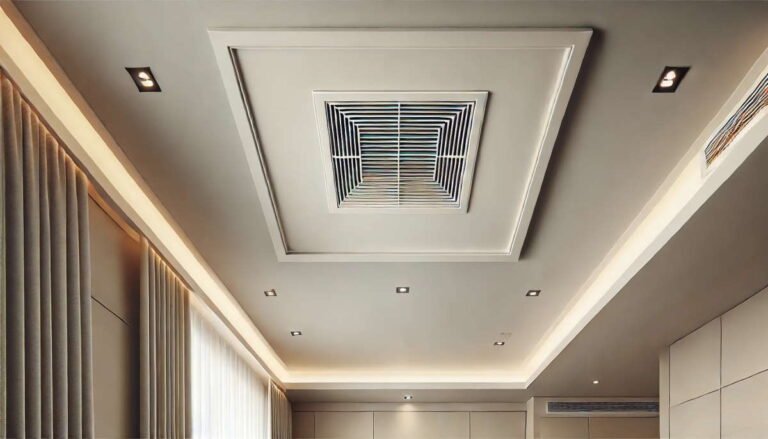
Tips and Tricks on How To Remove Bad Smell From The Air Ducts
The bad smell from the air ducts of your HVAC system is a common problem for many homeowners. Ductwork is the…
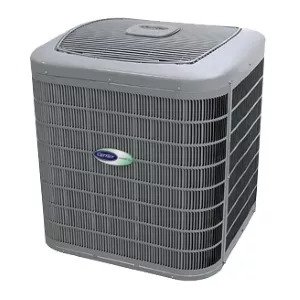
Heat Pump Not Cooling? Here’s What You Need to Know
Heat pumps are essential not only in the winter for heating our homes but also in the summer to cool…

Compare Ductless Mini-Split Heat Pumps vs. Window Heat Pumps: Which Is Right for You?
In this article, we are going to look at ductless mini-split heat pumps vs. window heat pumps, examine how each…

